By Duvan Caro, photographs by Elmer Arrieta.
Tacamocho is a township in the municipality of Córdoba Tetón, belonging to the Montes de María sub-region, on the banks of the Magdalena River in the Colombian Caribbean, which, in addition to being a territory hard hit by illegal armed and drug trafficking structures, today faces the consequences of climate change, which has forced entire villages to flee for their lives and the few belongings they have.
Thus, the peoples bordering the Magdalena River have been displaced and terrorized by illegal armed structures and drug trafficking, coupled with impoverishment, abandonment and systematic racialization by the state and regional governments, as well as the plundering of multinationals that see in this territory the ease of developing large agro-industrial and mining projects, through which large tracts of wetlands are dissected for the development of large projects, leaving the local inhabitants without land.
It should be noted that the Afro-farming and fishing communities that live along the banks of the Magdalena River are productive territories with a great vocation for livestock, diversified food production and fishing potential that feed the different cities of the Colombian Caribbean and a large part of the national territory.
Regardless of the different situations of violation of rights, the inhabitants of this territory have developed systems of resistance and collaborative work to cope with the floods that, since 2014, have become more frequent and have its inhabitants on high alert.
"SOS Tacamocho" is a volunteer collective made up of people from the community who, through collaborative work and continuous community monitoring of the river level, prepare for possible flooding and erosion that may occur in different parts of the community of Tacamocho, while raising their voices to the relevant authorities.
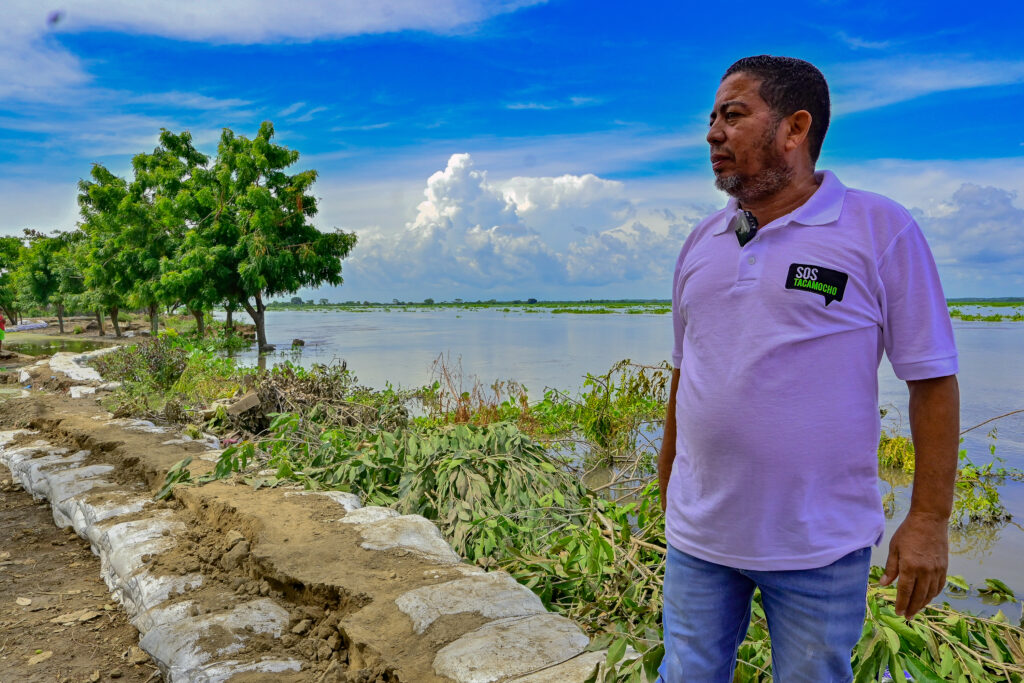
Marys Acosta has lived all her life in the community of Tacamocho. She lost her house three years ago, due to the first winter wave and the erosion of the river. She and other victims are part of the SOS Tacamocho community.
"This erosion started three years ago, but it had been going on for a long time, it has taken three main streets of the town and also my house. We, with our own resources, have relocated. We have had no help from the government, from anyone. But now the situation has worsened," he said.
Erosion and flooding, he says, have the families of Tacamocho at imminent risk, since the municipal mayor's office and the national authorities do not have the land available for the relocation of the entire community.
"We have the dilemma that, if we stay here, we run the risk of erosion, and if we leave, we will have to be outdoors, in the parks or in the schools. Because we have nowhere to go, nowhere to locate ourselves. What we want is for the national government to 'stop our balls', that they remember Tacamocho, that it is not only to come to collect votes".
Together with several members of the SOS Tacamocho collective, we walked along part of the banks of the Magdalena River, while its turbulent waters were retained by small dams made of pieces of wood and sacks filled with earth, which have been built in recent days by the inhabitants of the community.
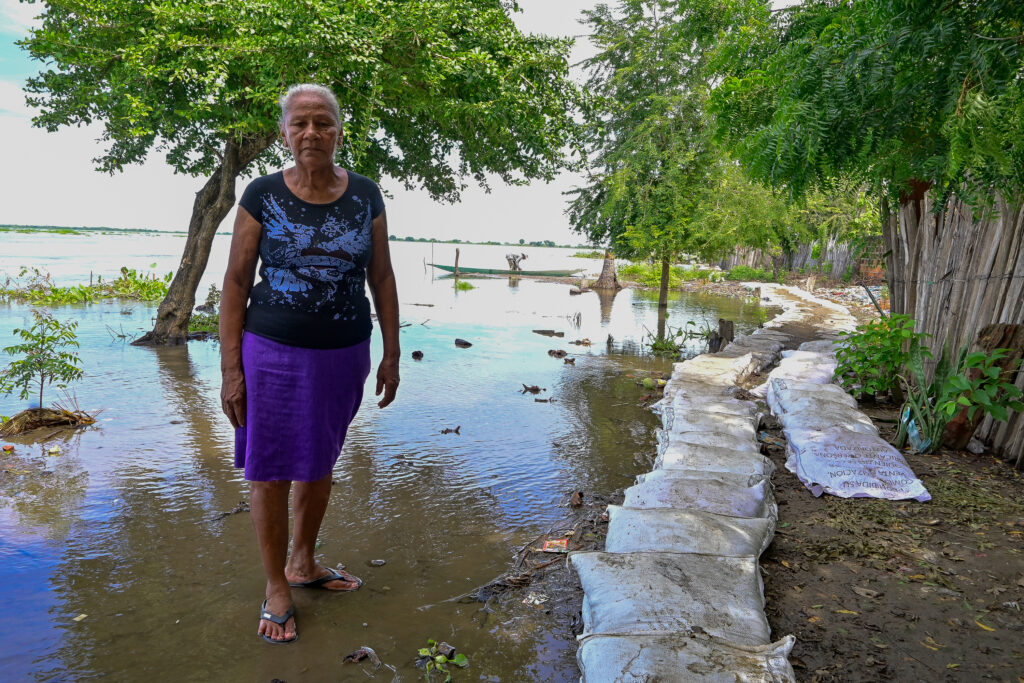
Erosion. Chronicle of a catastrophe foretold.
The Magdalena River bathes with its turbulent waters and its swampy complexes vast plains that make the Caribbean Coast a productive and unique area for its fauna and flora, which are integrated to large swampy areas, mangroves and mountains that extend throughout the region making it a great economic attraction for locals and foreigners.
In the lands closest to the river bank, large extensive cattle ranching projects have been established and, in recent years, large buffalo ranches have been developed, destroying the local vegetation. On the other hand, there are large extensions of monoculture timber plantations that separate the mountains from the marshes and the marshes from the river, directly affecting the biological transit of the waters.
Zambrano, Bolívar, is a town that has seen its economic development on the waters of the Magdalena River, which irrigates its lands as it passes through the municipality for the production of food crops -traditional food crops such as corn, rice, etc.- and small and large-scale cattle raising.
In past decades, these same waters made it a strategic point for regional and national commerce. But today, the waters of the river are one of its greatest fears, due to the floods and erosion that each year collapse houses as they pass through the town.
Pabla Martínez Rodríguez, a resident of the municipality of Zambrano, has lost her peace of mind in recent years as she has seen the waters of the river rushing into her house, which she is about to lose.
"I have been living in front of the Magdalena River for 20 years and today we are suffering because of the flooding that the river has brought in the last few days.
"We have not received a visit, much less help from anyone, not from the government, nothing. We are alone. My house has been falling down since December, when the floods started. If the floods continue, we will have to go somewhere else".
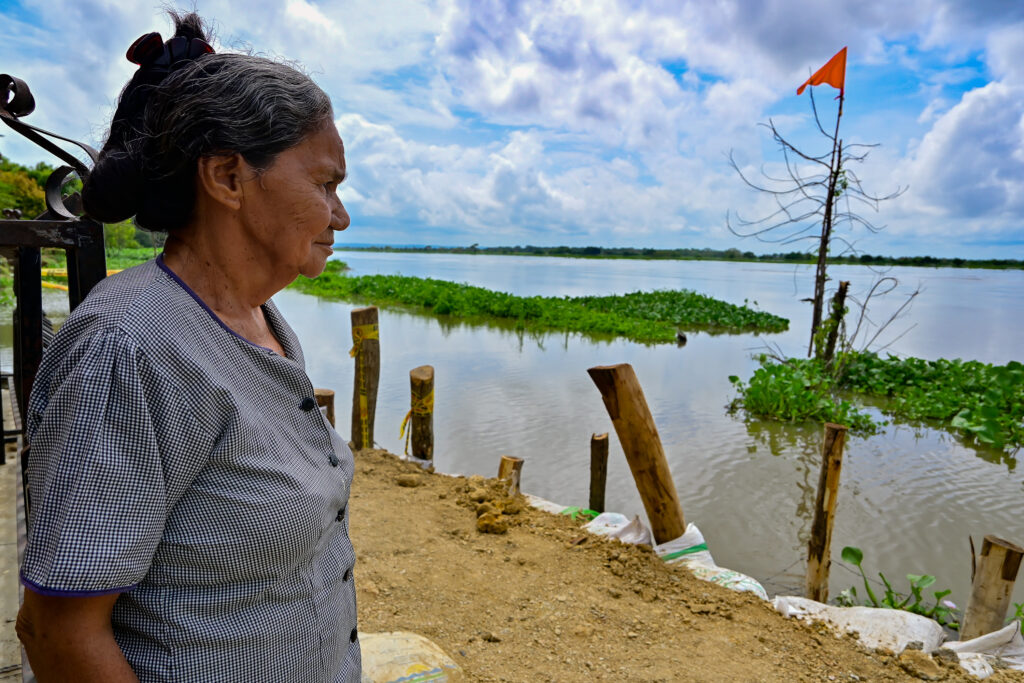
In La Albarrada, one of the historic streets of the community of Zambrano that borders the river bank, there are several meters of sacks, bags and plastic sacks filled with earth piled up and fixed with pieces of wood, which are part of the artisanal construction of the dam that separates the water from the houses and seeks to prevent the massive displacement of approximately 11 thousand people living in the urban area of the municipality.
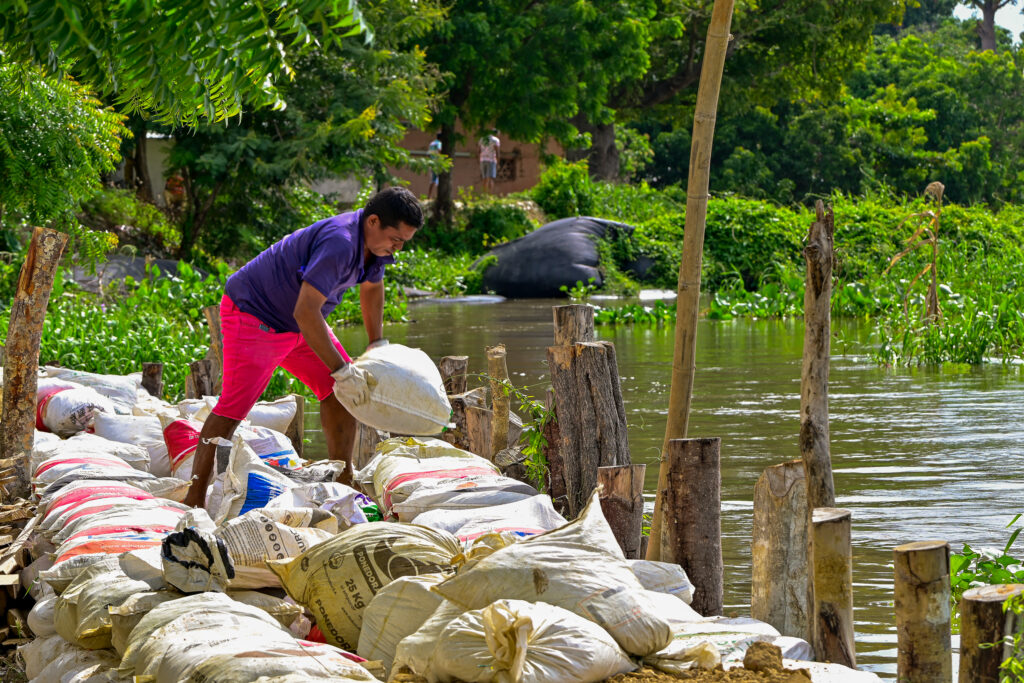
"This began on June 24 due to heavy rains and since then we have organized ourselves to address the erosion that is occurring in the street and other sectors that are at risk due to the inclemency of climate change and high concentrations of rainwater. The people are suffering from the gradual growth of the river".
These situations, explained Fabian Leiva Ospino, make the risk imminent for the population of the urban area of the municipality as well as for the peasant families located in the surroundings of the town, who have begun to arrive displaced from their plots due to the current flooding, causing an increase in the price of the products of the family basket.
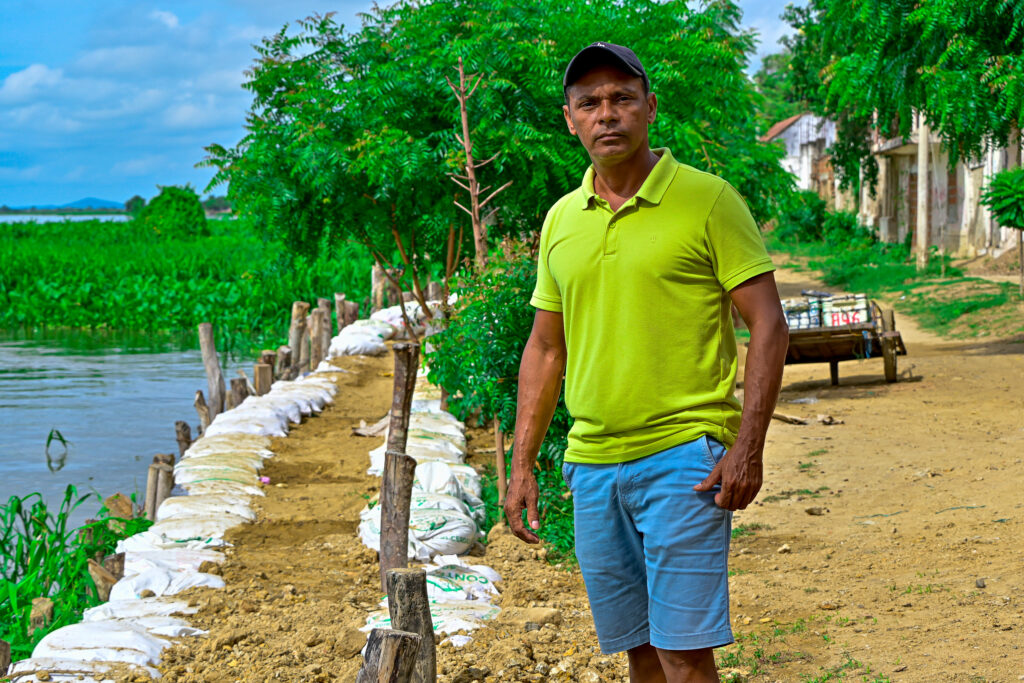
Fabian Leiva Ospino, community leader, who is a volunteer in the Salvemos a Zambrano motor group created during the emergency.
Most of the food crops have been lost due to the flooding and total inundation of fertile land, said Julio Humberto Ahumada, a farmer who has lost all his crops and belongings due to the floods.
"The families that depend on the planting of cassava, beans and other products, we are suffering because of the flood. We have been left without work, without land and without a home because everything is full of water and we don't know when it will end," he said.
"Winter has just begun and we are already adrift and have no solutions. The few cattle that we families own have to take them out and bring them to the shores of the town's carts, running the risk of them getting lost. The other families that depend on fishing do not fish as they used to, since the waters are expanded everywhere and the fish hide in the bushes, making it more difficult to fish.
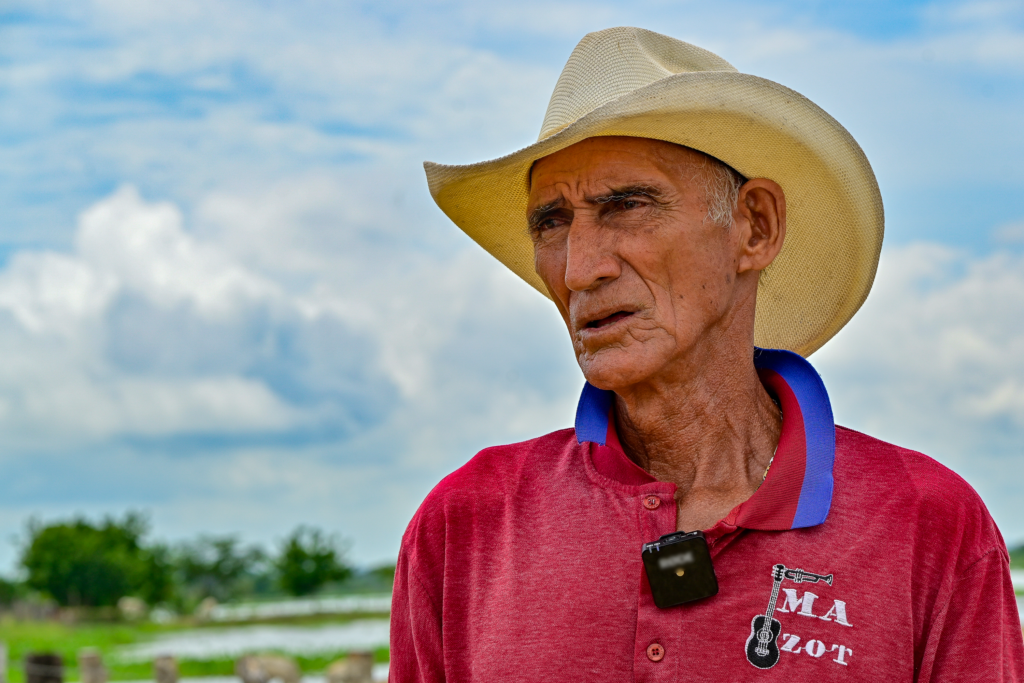
Relocation on paper
In 2017, an inhabitant of the community of Tacamocho, filed on his own behalf a popular action against the municipality of Córdoba Tetón, the department of Bolívar, the Corporación Autónoma Regional del Río Grande de la Magdalena ?CORMAGDALENA? and the Unidad Nacional General de Riesgos y Desastres ?UNGRD? with file number 13001-23-33-000-2015-00052-02.
The same would later rule in their favor in second instance, issued by the Council of State in 2019, in which the municipality of Córdoba Tetón, the Department of Bolívar, CORMAGDALENA and the UNGRD were urged to adopt the necessary measures and relocate the population living in the village of Tacamocho to a safe place, where it is not threatened by coastal erosion, flooding or flooding caused by the Magdalena River.
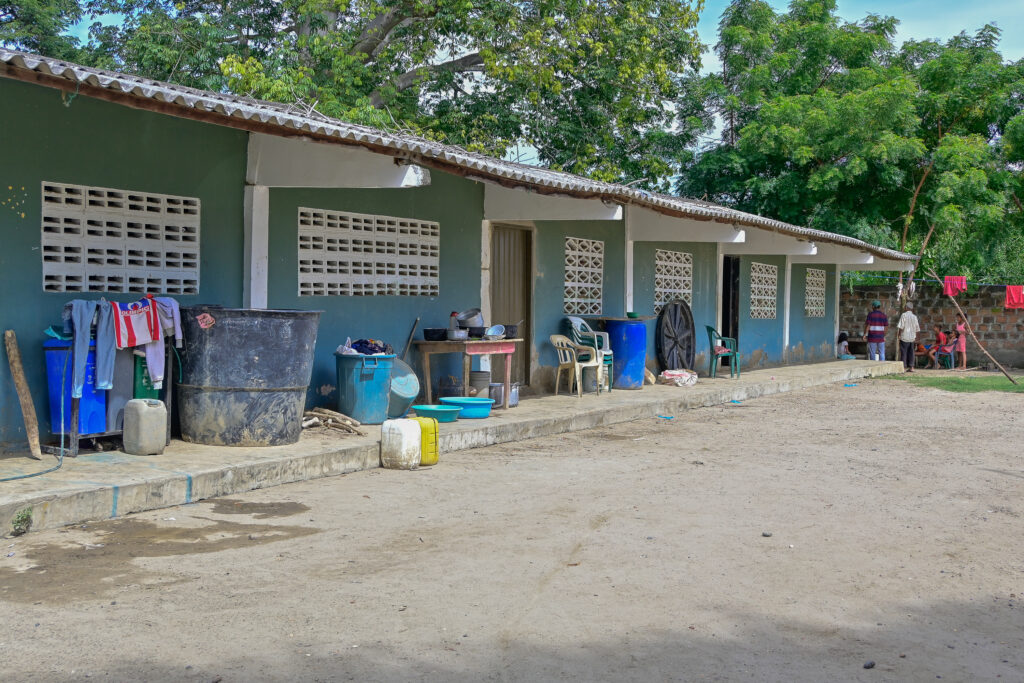
Manuel Gamarra, community leader and member of SOS Tacamocho, told us about the non-compliance with the Popular Action, while showing us the houses destroyed and abandoned by the erosion of the river.
"We are living one of the most serious situations in our town, the river has been at its highest risk levels since 2014, the year in which the first houses in the community began to be destroyed due to erosion. The people begin to move and that is where our fear begins, because the river is coming head-on against the population and begins to compromise, not only private properties, but also human lives. We have had two losses here that have hurt us very much".
"We are currently threatened by erosion and flooding from the river. The community itself has been building small artisanal dams with the help of the mayor's office to contain the water. But we all know that this is not going to solve the problem".
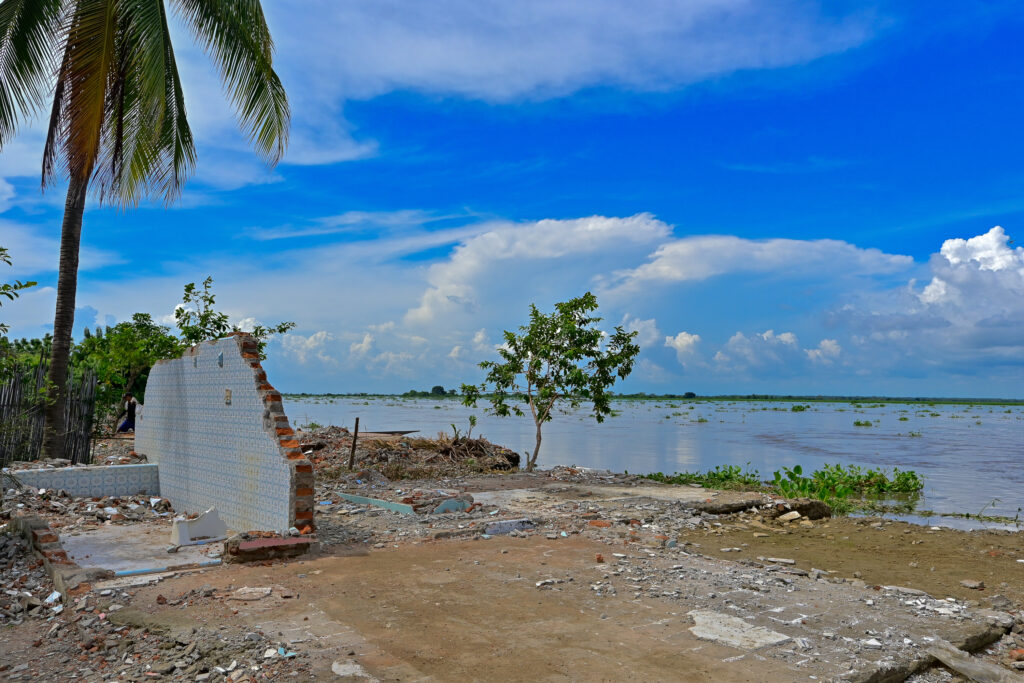
According to the SOS Tacamocho collective, since the erosion and flooding began, approximately 366 families have been displaced. This is a population of more than three thousand inhabitants. Gamarra tells us, looking towards the river.
"What we are currently seeking is to enforce the ruling that Tacamocho must be relocated. We want the mayor's office to have that land, to allocate the resources to take the first step, because we know that without that there will be no relocation".
The Tacamocho community's call to the national and departmental governments and to all the entities responsible for their relocation is reiterative as they see their houses collapsing without being able to do anything about it.
The river could enter the town at any moment and sweep away their homes, or there could simply be massive erosion of the community and its surroundings. In fear of this happening, several families are moving to any place, without guarantees and without institutional accompaniment.
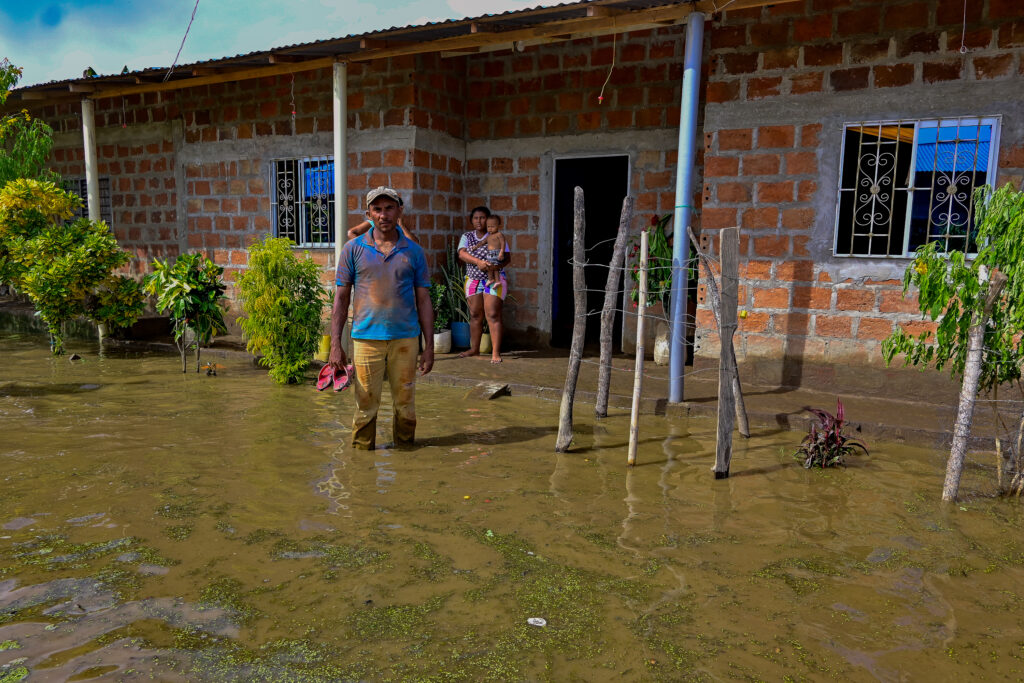
In our tour through the streets of Tacamocho, the inhabitants stated that people are moving to unsafe places or even to places where pigs used to be raised, without having the minimum conditions for decent housing.
The mayor's office has provided a tractor for all those who want to leave, and when the move becomes effective, they are given 400,000 pesos to pay rent and a market of 80,000 pesos per family, monthly.
"We have more than 15 days with the water inside our houses, the only hope is that the river waters go down, but what we see is that the water is rising and we are here with no place to go with our children. We are alone.
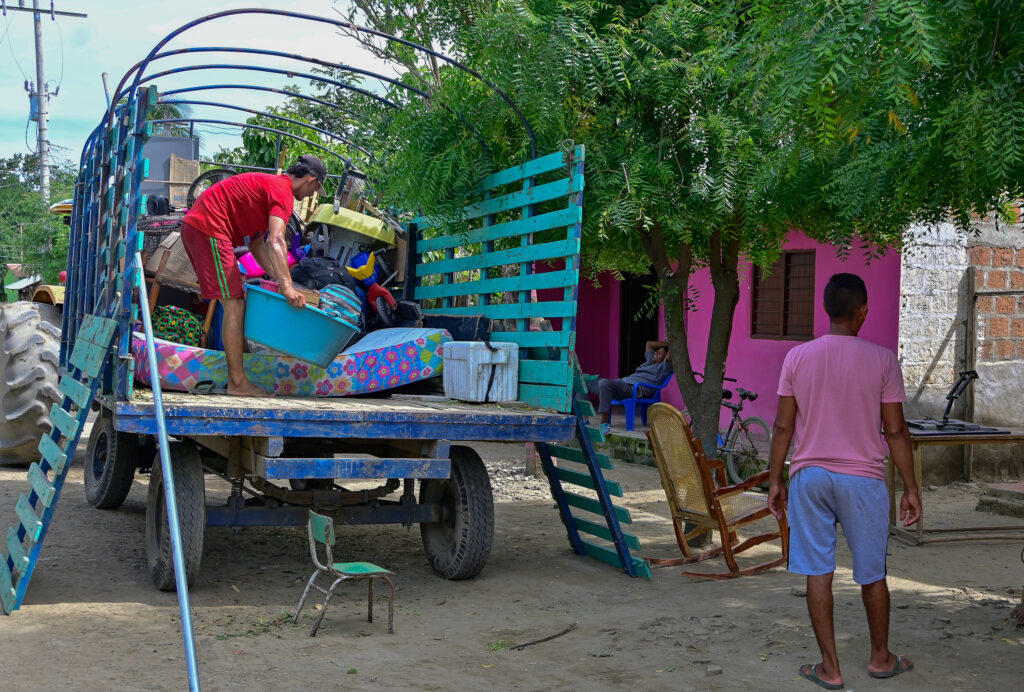
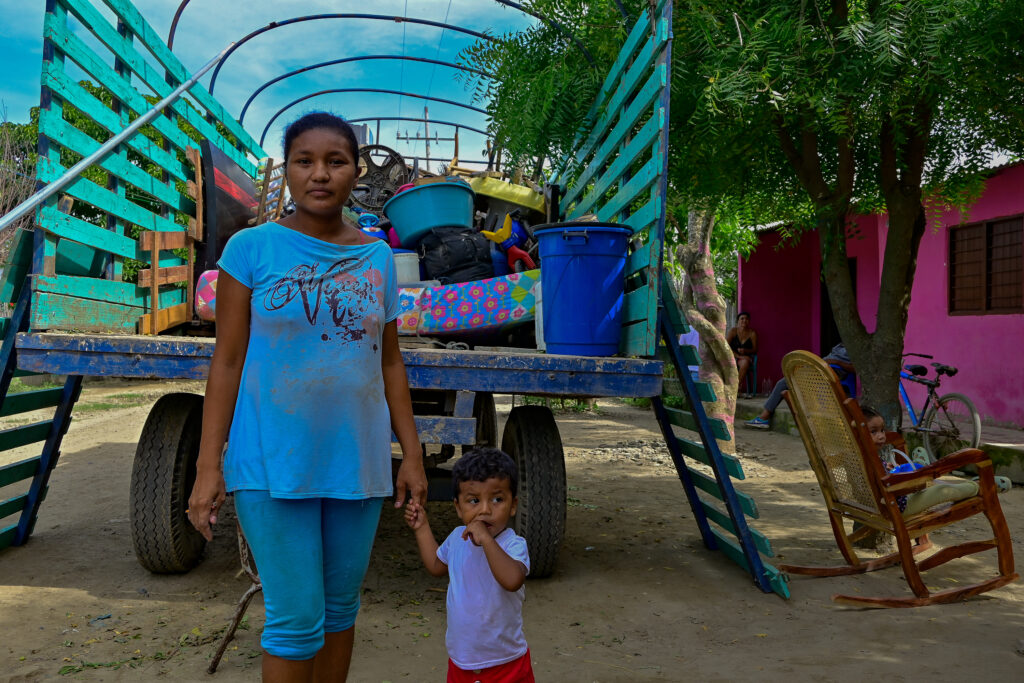
Idulis Arrieta, displaced from the community of Tacamocho by erosion and heavy flooding in recent days.
In the municipalities of Córdoba Tetón and Zambrano, works included in the Development Plans with Territorial Differential Approach (PDET) have been implemented for several months, as well as in the entire Montes de María sub-region, which are a planning and management instrument of the National Government through the Territorial Renewal Agency (ART), to implement as a priority and with greater speed the sectoral plans and programs, within the framework of the Rural Reform achieved in point one of the peace agreement signed by the Colombian State and the extinct guerrillas of the FARC-EP in 2016.
Several leaders of communities affected by erosion and flooding are asking what works are needed to address climate change in this area of national importance, which has been hit by violence and flooding for some time now.
You may be interested in: Portraits of resistance and life in the rural Caribbean region of Colombia


